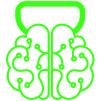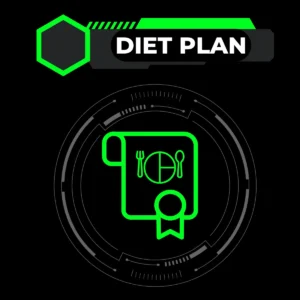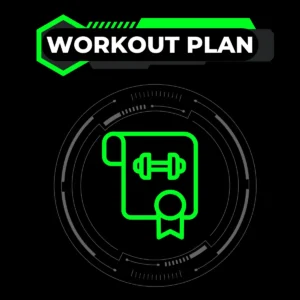
Eating a balanced diet is essential for maintaining good health and well-being. One of the easiest ways to ensure that you’re getting all the nutrients you need is by creating a healthy eating plate. But what exactly does that mean, and how can you implement it in your everyday life?
In this comprehensive guide, we’ll explore everything you need to know about building a healthy eating plate, including key components, guidelines to follow, and tips for clean eating, weight loss, and more.
What is a Healthy Eating Plate?
A healthy eating plate is a simple and visual way of representing the key components of a balanced meal. The concept is based on dividing your plate into sections, each of which contains a different food group. This method helps you make sure you’re getting the right mix of nutrients in every meal.
The healthy eating plate typically consists of:
- Vegetables and fruits (half of your plate)
- Protein (one-quarter of your plate)
- Whole grains (one-quarter of your plate)
- Healthy fats (a small portion)
By focusing on these key elements, you can enjoy a well-rounded diet that supports your overall health.
Key Components of a Healthy Eating Plate
Vegetables
Vegetables are a powerhouse of nutrients, including vitamins, minerals, and fiber. They’re essential for supporting immune function, digestive health, and reducing the risk of chronic diseases. A healthy eating plate should include a variety of vegetables, such as leafy greens, cruciferous vegetables, root vegetables, and colorful options like bell peppers, carrots, and tomatoes.
Fruits
Fruits provide important vitamins like Vitamin C, potassium, and antioxidants that help protect against disease and inflammation. Eating a variety of fruits like berries, apples, oranges, and bananas can help improve digestion and boost energy levels. Try to aim for at least two servings of fruits a day, balancing your intake with vegetables.
Proteins
Protein is vital for muscle repair, immune function, and hormone regulation. Your healthy eating plate should contain a good source of protein, such as lean meats (chicken, turkey), fish, eggs, or plant-based options like beans, tofu, and lentils. Including a mix of both animal and plant-based proteins can diversify your nutrient intake.
Whole Grains
Whole grains like brown rice, quinoa, oats, and whole-wheat bread are rich in fiber, which aids digestion and helps keep you feeling full longer. These grains are also packed with essential nutrients like B vitamins, iron, and magnesium. Including whole grains on your plate is essential for a balanced diet.
Healthy Fats
Healthy fats, such as those found in olive oil, avocados, nuts, and seeds, are crucial for maintaining heart health, brain function, and hormone balance. While fats are calorie-dense, consuming the right kinds of fats in moderation can help you feel satisfied and prevent overeating.
Healthy Eating Guidelines to Follow
Portion Control
Understanding portion sizes is key to maintaining a healthy weight and preventing overeating. Portion control means eating the right amount of food without overindulging. The healthy eating plate concept can help guide portion sizes by ensuring that half your plate consists of vegetables, one-quarter of your plate is protein, and the remaining quarter is dedicated to whole grains.
Meal Timing and Frequency
Meal timing plays an important role in energy levels and metabolism. Eating balanced meals throughout the day can help maintain steady blood sugar levels and prevent cravings. Aim for three meals a day with snacks in between, if needed. It’s important to listen to your body and eat when you’re hungry.
Clean Eating for Beginners
What is Clean Eating?
Clean eating is all about choosing whole, minimally processed foods and avoiding artificial additives, refined sugars, and unhealthy fats. Clean eating focuses on fresh vegetables, fruits, whole grains, and lean proteins. It’s a lifestyle choice that promotes better health and well-being by focusing on nutrient-dense foods.
How to Start Eating Clean
For beginners, starting clean eating can feel overwhelming, but it doesn’t have to be complicated. Begin by making small changes such as:
- Replacing processed snacks with fresh fruits and veggies.
- Cooking meals at home using whole ingredients.
- Avoiding sugary beverages and choosing water or herbal teas instead.
Remember, clean eating doesn’t mean perfection. It’s about making more mindful choices that benefit your health.
Building Your Own Healthy Plate: Personalizing Your Meals
My Healthy Plate
Your healthy eating plate should reflect your personal preferences and dietary needs. Whether you’re a vegetarian, vegan, or following a specific diet like keto or paleo, you can customize your plate to include foods that meet your nutritional goals.
Experiment with different combinations of vegetables, fruits, proteins, and grains to discover what works best for your body. Keep in mind that balance is key — aim for variety in your meals to ensure you’re getting a wide range of nutrients.
Balanced Diet Chart for Weight Loss
Meal Planning for Weight Loss
If you’re looking to lose weight, the healthy eating plate can help guide your meal planning. To promote weight loss, focus on creating a calorie deficit while maintaining a balanced diet. This means consuming fewer calories than you burn, but still prioritizing nutritious foods like vegetables, lean proteins, and whole grains.
Low-Calorie Options
If you’re aiming for weight loss, consider including low-calorie but nutrient-dense foods like leafy greens, berries, and lean proteins such as chicken breast or fish. These foods will help keep you full while providing essential nutrients without excess calories.
The Role of the Eatwell Guide
Overview of the Eatwell Guide
The Eatwell Guide is a visual tool developed by the UK’s National Health Service (NHS) to help individuals create a balanced diet. It divides the plate into sections similar to the healthy eating plate, promoting the same food groups: fruits, vegetables, proteins, carbohydrates, and dairy or dairy alternatives.
By following the Eatwell Guide, you can ensure you’re meeting your nutritional needs in a balanced way.
The Benefits of Following a Healthy Eating Plate
Nutritional Benefits
A healthy eating plate ensures you’re getting a variety of nutrients, including vitamins, minerals, fiber, and healthy fats. Eating a diverse range of foods helps your body function optimally and reduces the risk of nutrient deficiencies.
Mental and Emotional Well-being
The foods you eat not only impact your physical health but also your mental and emotional well-being. A balanced diet can help improve mood, reduce stress, and increase energy levels, promoting overall emotional stability.
Overcoming Common Challenges in Building a Healthy Eating Plate
Time and Budget Constraints
One of the main barriers to eating healthy is lack of time and budget constraints. However, it’s possible to eat healthy on a budget by planning your meals, buying in bulk, and preparing simple, quick dishes. Opt for frozen vegetables, canned beans, and whole grains to keep costs low without sacrificing nutrition.
Build a Balanced Plate: Must-Read Resources
Creating a healthy eating plate is essential for a well-balanced, nutritious diet. To understand the science behind the “Healthy Eating Plate,” visit this comprehensive guide on Harvard T.H. Chan School of Public Health.
For expert advice on healthy eating and lifestyle tips, Mayo Clinic provides valuable information to help you make informed choices.
Additionally, for heart-healthy nutrition, check out the American Heart Association’s guidelines on food choices that support overall health and well-being.
By linking to these trusted sources, you can deepen your understanding of creating a balanced eating plate and make better nutrition decisions.
Conclusion
Building a healthy eating plate is a simple yet powerful way to ensure you’re consuming a balanced, nutritious diet. By following the guidelines and incorporating a variety of foods from different food groups, you can promote better health, support your weight loss goals, and improve your overall well-being.


